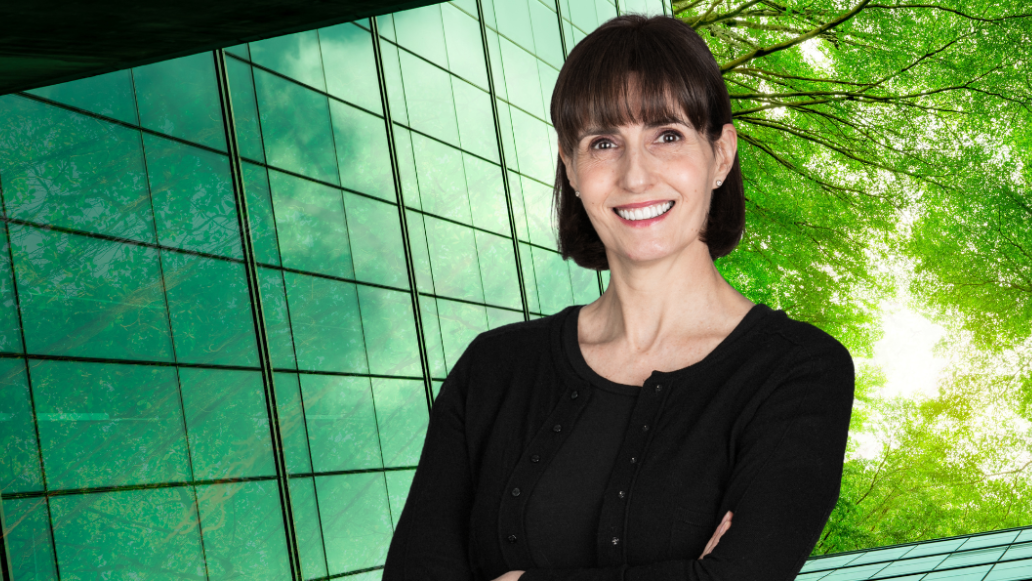Digital transformation, circular economy, and other places this fundie finds global leaders

The below was produced by Livewire Markets and published on 20 July 2023.
In March this year, Livewire conducted an Expert Insights video interview with Ian Simm, founder and CEO of Impax Asset Management.
The interview proved hugely popular, being viewed more than 100k times, garnering 60 likes, and generating robust debate in the comments section.
The fact that the discussion focused on sustainability probably drove a lot of that debate. Sustainability is a massive theme, at which trillions of dollars will be thrown over the coming decades.
And whilst people can argue the merits of sustainability all they like, what’s not up for debate is the fact that significant amounts of money are being committed and it will continue to create investment opportunities.
Purely from an investment opportunity perspective, it’s a theme that shouldn’t be ignored by serious investors.
That sentiment is shared by Kirsteen Morrison, Portfolio Manager for the Impax Global Opportunities Fund, who recently visited Australia from the United Kingdom to promote the launch of the fund down under.
.png)
During her busy tour, she took the time to answer some questions for Livewire, outline the Fund's investment philosophy, and share a couple of stocks she particularly likes right now.
You have been investing in sustainability for over 25 years, but for most investors, this is still a relatively new theme. How has the space changed since you started out?
Historically, ‘ethical’ and then ‘socially responsible funds’, which began to emerge about 25 years ago, sought to exclude companies that did not manage their environmental and social risks in a responsible manner. Since our inception in 1998 Impax has not operated from an exclusion-based model, but rather has focused on the opportunities arising from the transition to a more sustainable economy, whilst managing the key material environmental, social and governance (ESG) risks facing a company. In recent years, there has been an increase in the market’s awareness of the benefits of ESG analysis as a tool to assess a company’s broader approach to risk management and the structural growth opportunities arising from the transition to a more sustainable economy.
Impax is well placed to add value identifying companies that benefit from this broadening opportunity set as the transition to a more sustainable economic model unfolds.
What are 2-3 key elements of the Impax investment philosophy and how do they drive returns for investors?
Our philosophy is centred on the concept of investing in the transition to a more sustainable economy.
We believe that capital markets will be shaped profoundly by global sustainability challenges, particularly climate change, environmental pollution, natural resource constraints, demographic and human capital issues such as equality, diversity, and inclusion.
We believe that these trends will drive growth for well-positioned companies.
Our fundamental analysis of these companies incorporates long-term risks, including ESG factors, to enhance our investment decisions. We believe that this investment philosophy can contribute to risk-adjusted returns for our clients over the medium to long term. We undertake fundamental bottom-up stock analysis, including deep due diligence of companies with a focus on quality businesses to really understand the character of an investee company.
What is the Impax Sustainability Lens? Why did you develop it and how does it work?
The transition to a more sustainable global economy creates risks and opportunities; Impax’s proprietary Sustainability Lens analyses these risks and opportunities and highlights areas of the market with transition tailwinds and headwinds. The Sustainability Lens is used to direct Impax’s analysts towards potentially attractive areas for investment.
We believe that companies that understand their key material risks are more likely to be strategic in their thinking, effectively manage regulatory challenges and, overall, be more resilient in the face of change. The Lens comprises eight categories of opportunity and nine categories of risk, to help us analyse the broader economy.
We score each sub-industry against these categories to produce composite opportunity and risk scores, and, based on these scores, sub-industries are ranked as high, neutral, or low for both opportunity and risk.
What are the common characteristics/metrics of the companies that are currently in the portfolio?
The Global Opportunities strategy is an unconstrained strategy and therefore investee companies can operate in any sector of the economy providing they have a market cap greater than $1 billion and they are aligned with the Impax Sustainability Lens.
We seek companies with durable business models, favourable supply-side conditions and attractive valuations. The companies held by the strategy typically have an above-average predictability of revenue or cash flow. On occasion, a company may not present such revenue/cash levels at the initial point of purchase, but may still be considered investable if they are expected to achieve them within a medium time frame.
How do the current market conditions impact your ability to find the types of companies you want to invest in at appropriate prices?
Growth worries continue, as economic data remains mixed.
We are seeing divergence within markets and across regions and there is a concentration of performance in a few stocks, particularly in the US.
The earnings season finished better than it started, with positive surprises outweighing negative surprises, but commentary about macro uncertainty remains a feature. Destocking of inventory channels remains a concern as this could lead to lower volumes and weaken prices and margins, which in turn increases the risk of earnings downgrades.
Against this backdrop, we remain focused on finding companies with strong pricing protection, innovative business solutions and attractive valuations.
Environmental and sustainable equities continue to see policy support, such as the Inflation Reduction Act (IRA) and we believe that over the longer term, a renewed focus on energy efficiency and energy security are supportive of opportunities across a wide range of sustainable solutions.
Do you expect those conditions to improve or worsen in the next 12-24 months?
There is an unusual level of uncertainty about the macroeconomic outlook in 2023. Markets have recovered from their lows, having discounted a pivot in interest rates as the rate of increase in inflation peaked.
However central banks remain vocal that they will break inflationary expectations.
The turmoil in the banking sector at the beginning of the year helped contribute to tighter financial conditions which could do some of the work of Federal Reserve in taming inflation. However, tighter credit is an additional uncertainty and increases the risk of a recession. Consequently, volatility is likely to persist until the fight against inflation is over and there is greater certainty that the rate cycle has peaked.
Areas of interest for the strategy include beneficiaries of increased spending on drug discovery and testing, the accelerating digital transformation of enterprises, companies providing access to finance and businesses enabling the rise of the sharing and circular economy.
Can you give us 2 examples of stocks that you like right now, and the investment case for each?
One of the themes we’re interested in is the opportunities in the emerging sharing economy and how equipment rental can contribute to a more sustainable, circular economic model.
“One example is in uniform rental services offered by the likes of US company Cintas (NYSE: CTAS), which serves over one million businesses in the US. Societal acceptance of the sharing economy as a concept and growing corporate recognition of cost benefits is leading to an acceleration in a broad secular shift from owning to renting. The company offers structural growth drivers with strong price power, which should help to sustain margins in the current inflationary environment.
Another example is United Rentals (NYSE: URI), which is the market leader in the $55bn North American industrial equipment rental market, which is supported by structural trends of increasing rental penetration, market expansion and competitor consolidation. United Rentals is a key enabler of the sharing economy, which in industrial markets generates substantial environmental savings; this is an increasingly important but underappreciated growth driver.
What are the ideal conditions for your strategy? Equally, under what conditions will the strategy likely struggle?
The strategy has a quality focus, investing in companies benefiting from structural growth drivers through their alignment to the transition to a more sustainable economy.
As a consequence, the strategy has a ‘defensive growth’ tilt and has historically been overweight more economically defensive market segments. The strategy has performed well in a range of market backdrops, including rising and falling markets. However, the strategy tends to under-perform in two scenarios:
- Periods of rapid upward adjustment in the growth outlook – during these periods investors rotate into cheaper more cyclical stocks while quality growth companies tend to underperform.
- Periods of rapid increase in the level of interest rates – this leads to short-term underperformance as quality growth stocks tends to have longer duration characteristics, which are more sensitive to rapid changes in the discount rate.
